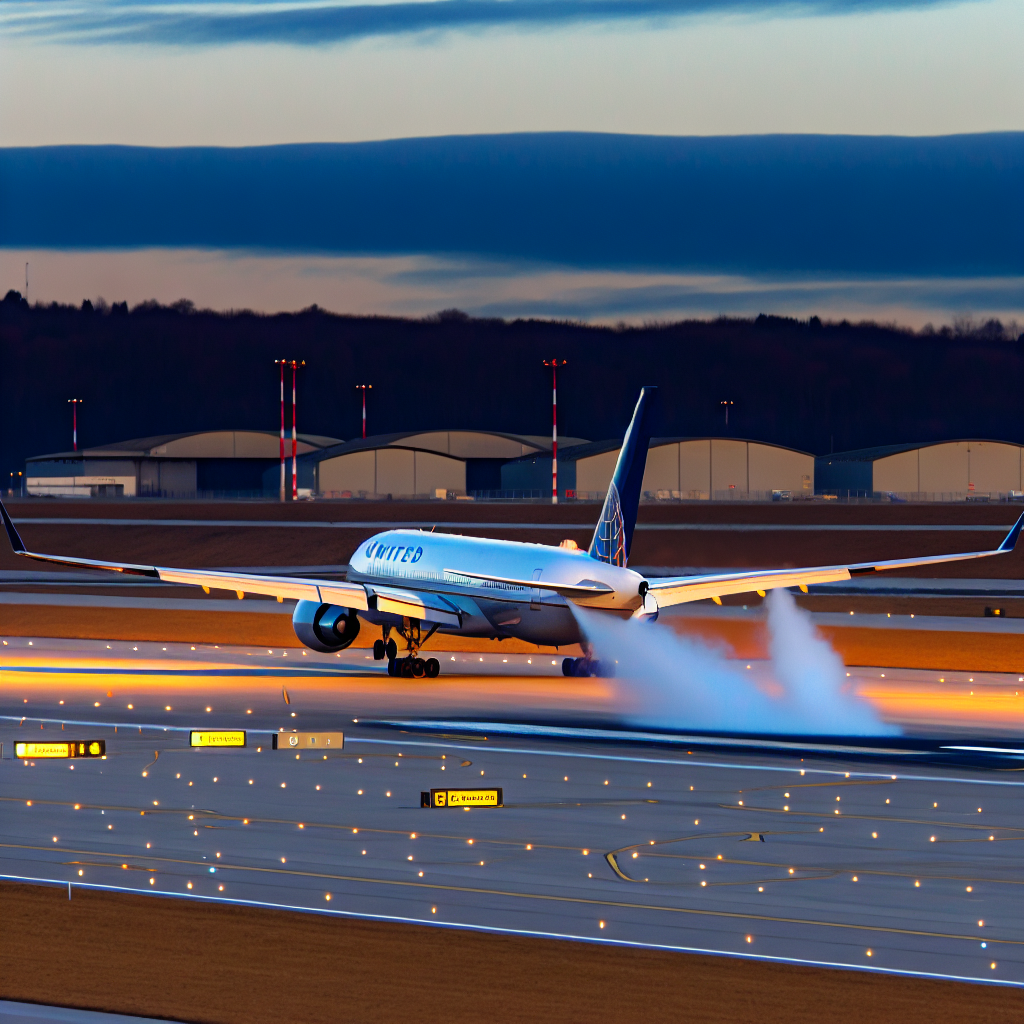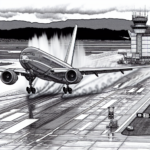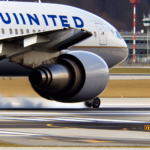ZURICH- A United Airlines (UA) Boeing 767-300 operating Flight UA12 from Zurich Airport (ZRH) to Chicago O’Hare (ORD) was compelled to abort takeoff at high speed on June 24, 2025.
The plane, carrying 142 passengers and crew members, safely halted on Runway 16 after the flight crew executed a rejected takeoff at around 145 knots. Emergency responders successfully evacuated the passengers, and the aircraft was removed from the runway nearly four hours later.
United Airlines Flight UA12, flown by a Boeing 767-300 (registration N684UA), was scheduled to leave Zurich Airport (ZRH) at 09:50 local time, heading to Chicago O’Hare International Airport (ORD).
As the aircraft began its takeoff roll on Runway 16, the flight crew initiated a high-speed rejected takeoff at approximately 145 knots, exceeding the typical V1 threshold for this aircraft type.
The aircraft came to a complete stop just beyond the intersection with Runway 28. Due to the intense braking, several main landing gear tires were deflated. Passengers were evacuated via mobile stairs directly on the runway, with no injuries reported.
Initial communications between the flight crew and Zurich tower indicated that the pilots thought they could clear the runway and continue with their post-abort checklists. However, the tower instructed them to hold their position due to the emergency response already being mobilized.
While United Airlines has not revealed specific technical details, the airline confirmed to Swiss media outlet 20 Minuten that a “technical issue” necessitated the rejected takeoff. A spokesperson mentioned that the airline was actively rebooking affected passengers on alternative flights to minimize delays.
The aircraft remained on the runway for nearly four hours before being towed to a isolated stand. Zurich Airport operations faced temporary disruptions, although air traffic resumed on alternate runways during the incident response.
Unusual Abort Above V1 Speed
Aborted takeoffs, while a part of standard safety procedures, are typically carried out below V1 speed—a decisive point beyond which takeoff should proceed. For the Boeing 767-300, V1 speed generally falls below 140 knots, depending on weight and weather conditions.
According to Flightradar24 data, UA12’s abort event occurred around 143–145 knots, categorizing it among the rare 2% of rejected takeoffs executed at or above 120 knots. Such high-speed aborts are performed only in extraordinary circumstances, usually due to critical flight system failures.
Following the incident, a formal investigation by Swiss aviation authorities and airline engineers is anticipated.
Similar Incidents
On June 8, 2025, an Emirates Airline (EK) flight scheduled to depart from Chennai International Airport (MAA) to Dubai International Airport (DXB) aborted takeoff due to a technical fault detected during taxiing.
Conversely, a United Airlines (UA) flight from Wilmington International Airport (ILM) to Newark Liberty International Airport (EWR) had to stop its takeoff roll on May 24, 2025, following a complete engine shutdown just before liftoff.
The Emirates (EK) Boeing 777 was preparing for departure at Terminal D1 in Chennai (MAA) when, at approximately 9:50 AM IST, the pilots identified a system anomaly while taxiing. The flight crew immediately contacted air traffic control and requested to abort the takeoff for safety purposes.
Emergency response teams promptly arrived on-site at Chennai Airport (MAA). The aircraft was safely towed back to its gate, where Emirates’ technical team began diagnostics. Despite initial troubleshooting attempts, the fault persisted. By 12:20 PM IST, the decision was made to cancel the flight, impacting all 312 passengers onboard.
In a separate incident two weeks earlier, United Airlines (UA) faced a similar situation at Wilmington International Airport (ILM). The aircraft, already delayed by over five hours, initiated its takeoff roll when the pilots abruptly halted the plane. Passengers were later informed that one engine had failed, prompting a return to the gate and rescheduling of the flight for the following morning.
Safety Protocols and Emergency Response
Both incidents fall under the category of rejected takeoffs (RTOs), a critical phase where flight crews must act decisively before hitting V1—the speed at which takeoff becomes irreversible. Aviation safety regulations stipulate that pilots must abort takeoff if any serious fault is detected before this threshold.
In the United Airlines (UA) incident, the captain reportedly mentioned a generator failure linked to essential hydraulic systems. Such failures, while uncommon, can arise from issues including:
- Compressor stalls
- Bird strikes
- Fuel system leaks
- Foreign object debris (FOD)
- Component detachment
- Fire or overheating in engine compartments
The aircraft involved in both incidents—widebody long-haul jets—are designed to handle engine failures and incorporate multiple system redundancies, ensuring the safety of passengers and crew in high-stress scenarios.
Stay tuned for more updates and follow us on social media for the latest information.
Join us on Telegram Group for the latest aviation updates. Subsequently, follow us on Google News

Based on an article from aviationa2z.com: https://aviationa2z.com/index.php/2025/06/25/united-pilots-aborts-takeoff-at-zurich-airport/?utm_source=rss&utm_medium=rss&utm_campaign=united-pilots-aborts-takeoff-at-zurich-airport



